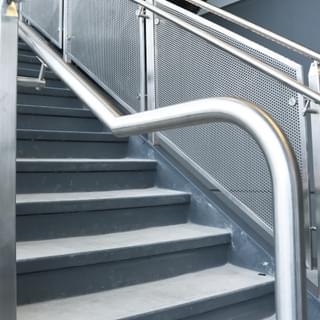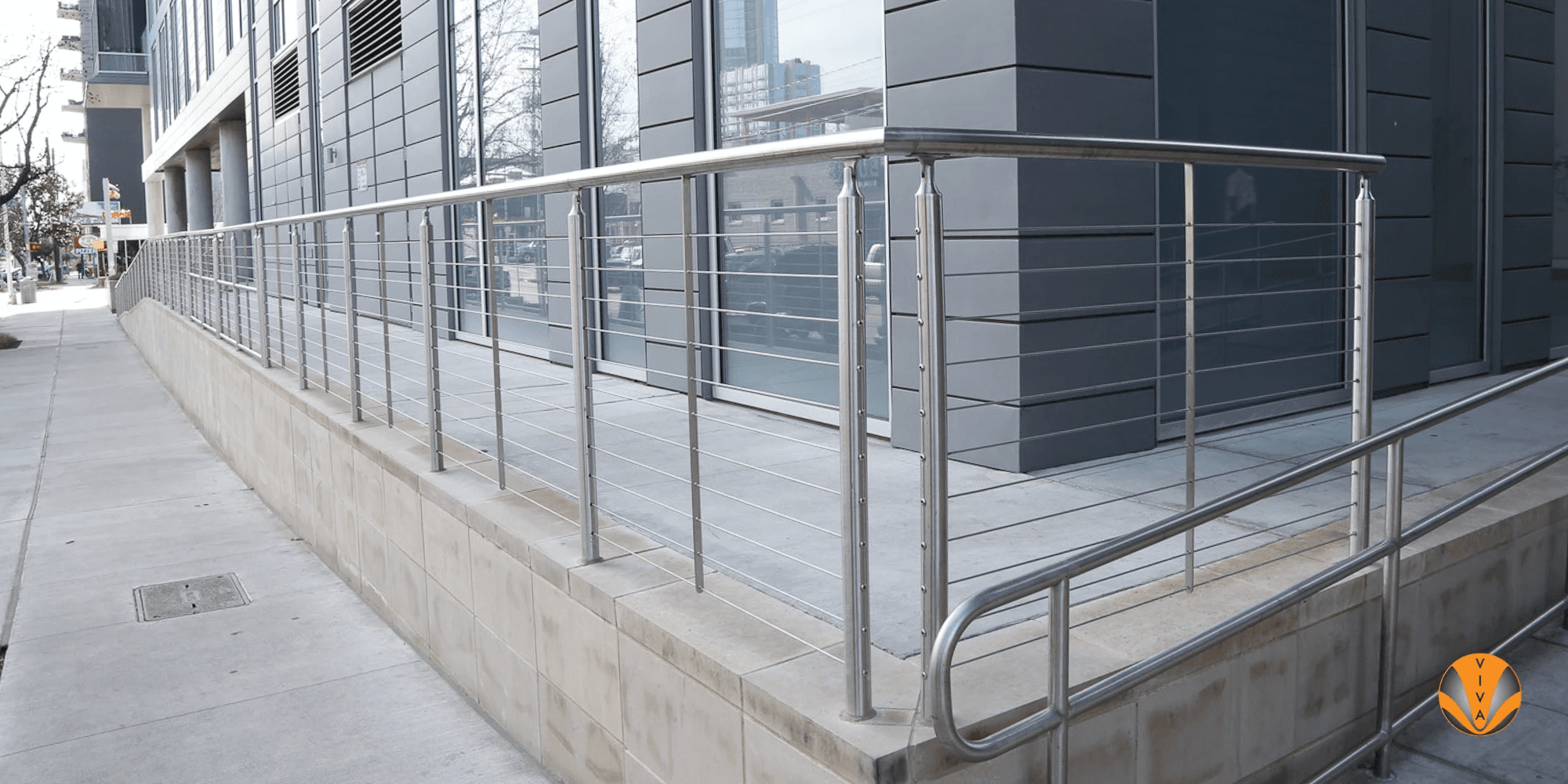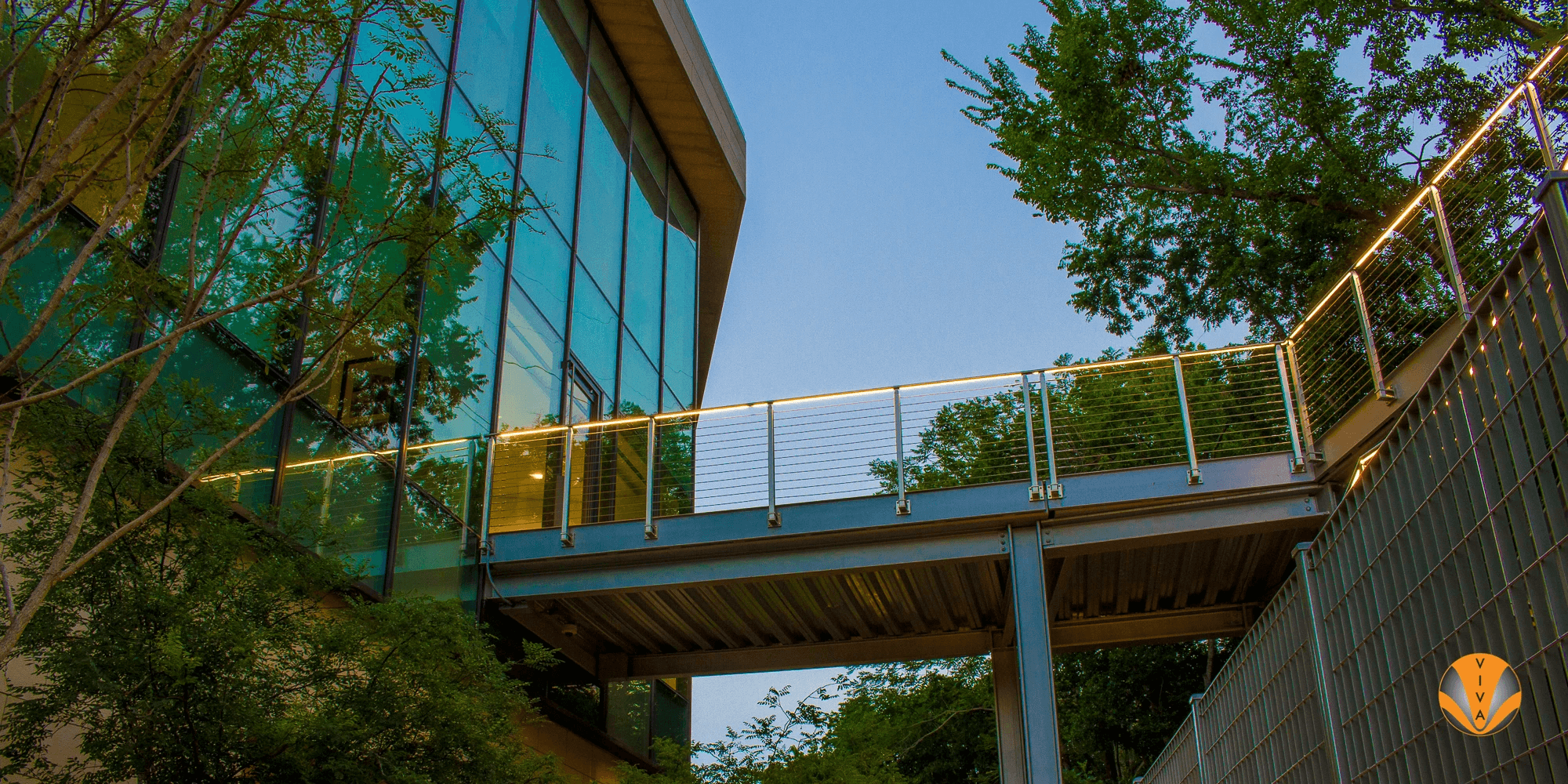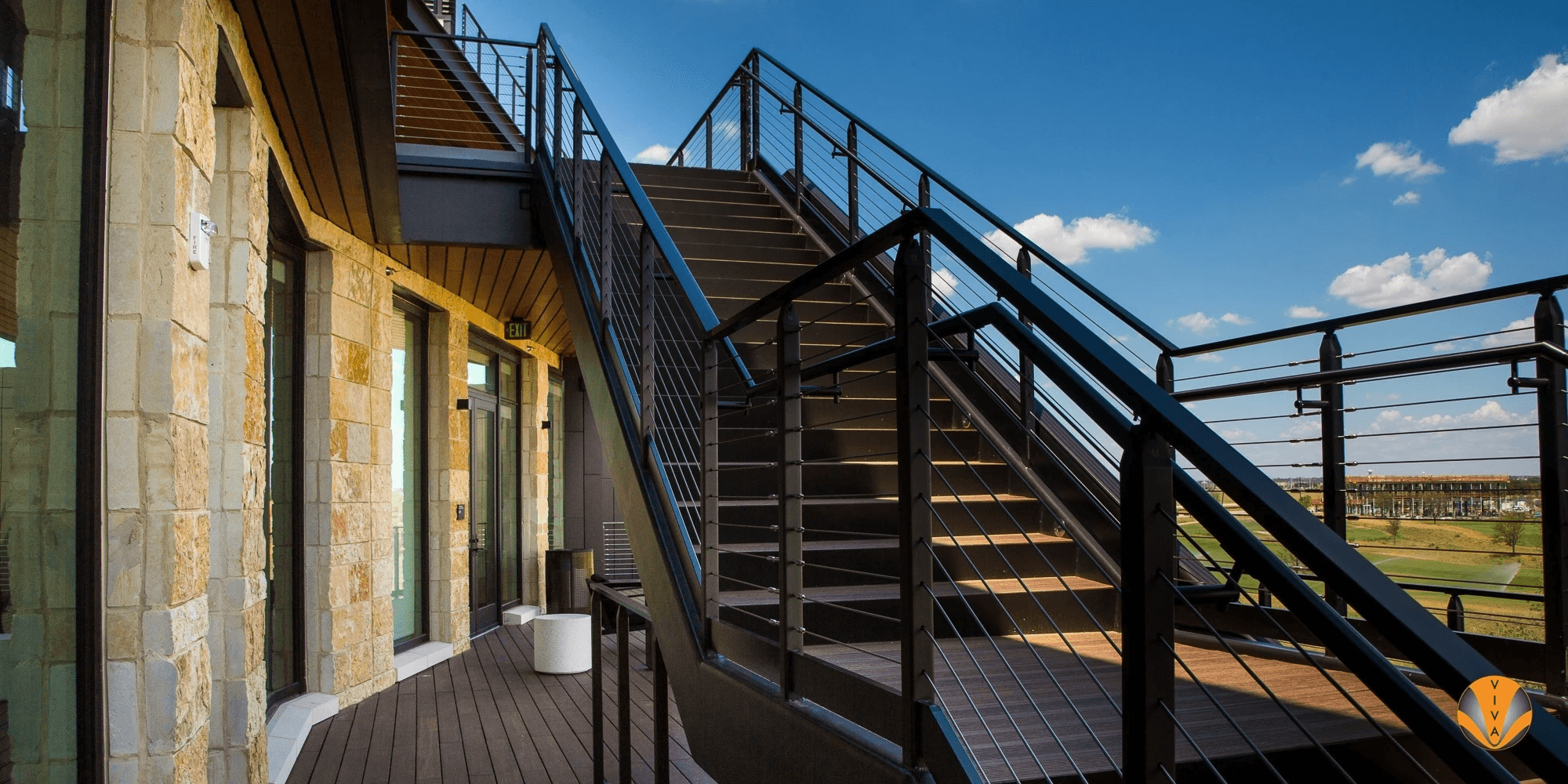Aluminum railings and steel railings can achieve a similar look, but the differences in strength, applications, and cost should be considered when making the final decision between the two.
20 Years of VIVA Railings | 2005 – 2025 Learn More
20 Years of VIVA Railings | 2005 – 2025 Learn More


Aluminum railings and steel railings can achieve a similar look, but the differences in strength, applications, and cost should be considered when making the final decision between the two.
Stainless steel railings offer superior durability and strength but tend to cost more. Steel is formed from a blend of metals that includes iron, nickel, chromium, and molybdenum along with non-metal elements like carbon, nitrogen, and others to create an alloy with superior strength and durability.
Stainless steel is classified into “grades” with grades 304 and 316 being the most common. The addition of chromium to the mix of metals aids in its corrosion resistance. Finish options are often either a satin, mirror finish, or powder coating to achieve the desired color.
Stainless steel railings have superior corrosion resistance and strength which makes it a good choice for high traffic areas and areas where the railings may sustain an impact. It is also more suited for outdoor applications where salt water spray may be present, as it stands up to corrosion from saltwater as well as high levels of pollution much better than aluminum does. When stainless steel has reached the end of its usable life, it can be recycled by melting it down and reforming it into new products.
Cable railings made with stainless steel offer a sleek and modern style that can stand on its own or pair well with wood to create a contemporary style with natural warmth. Stainless steel railings are typically more expensive than aluminum, so it's important to consider the budget as well as the applications when deciding between a steel railing or aluminum railing.
VIVA Railings offers a line of stainless steel cable railing systems that can be customized to the needs of individual projects. With a range of post profiles, handrail options, and stainless steel infill, these systems will complete your project while meeting safety requirements and building codes. Here are just a few of the systems we offer:

This minimalist cable railing design features a structural “T” section that serves to add post stability against the tension from cable strands and conceals the cable mounting hardware. The stainless steel components can be a satin or mirror finish, or powder coated to match the color palette of the design.

The round tubular posts of this system provide the perfect support for perforated metal infill panels with the option of rounded, slotted, or square motifs in varying sizes. This decorative railing also enhances safety and design along with reducing noise and blocking UV light.

This ultra-contemporary stainless steel railing system features infill panels that appear as though they are suspended in air. The wire mesh infill is available in 10 patterns that fit into a signature box frame.
Aluminum is also an alloy made by processing the raw bauxite mineral through a number of stages until it creates a white powder called alumina or aluminum oxide. This powder then undergoes a process called electrolytic reduction which transforms it into the aluminum that we know.
Aluminum railings are often less expensive than stainless steel and are also lighter which can create a more cost effective project. While aluminum is corrosion-resistant, it tends to be more prone to corrosion than stainless steel. It is best used in indoor applications or in areas without saltwater or harsh pollutants in the air. It is also impact resistant and weather-resistant, so it can be used in appropriate outdoor applications.
As with stainless steel, aluminum is recyclable, so at the end of its usable life, it can be reused and reformed into a new product. Aluminum railings with glass infills create a safe and reliable railing system without visual obstructions. This contemporary system can be a cost-effective and durable railing solution.

Installed with a patented compression set aluminum base shoe system, this aluminum railing is a modern take on safety and style. The glass panels are available in an extensive selection of colors and frosted options and the aluminum can be a satin or mirror finish, or powder coated in a range of colors.

This economically-conscious railing system is well suited for high-end multi-family projects. The slim profile of the posts and railings paired with the glass infill creates a budget-friendly glass railing system that is both innovative and modern.
When choosing between steel or aluminum deck railings, it’s important to consider cost, strength, durability, and design goals. Both options offer incredible durability and strength and can fit different budgets and designs.
Contact the experts at VIVA Railings today to discuss the differences between aluminum and steel railings and see which is the best fit for your project!